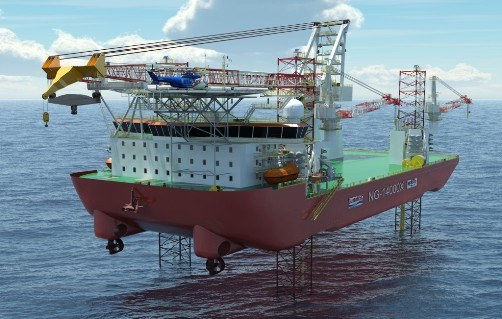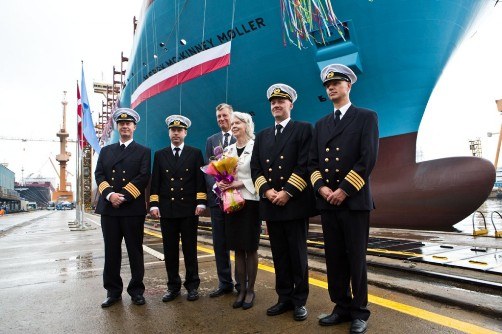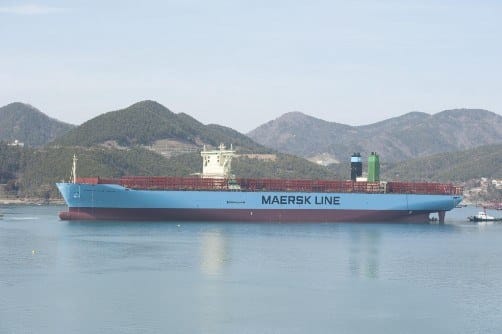Scientists Make Shocking Discovery Inside The Great Blue Hole Of Belize
Divers finally explored the bottom of the Great Blue Hole in Belize, but what they found there left them awestruck and in great disbelief.

The pristine natural wonder, till now unexplored by humans, was littered with trash, corpses and rare marine creatures. But that is not all. The most surprising find was a series of mysterious underwater holes.
The Great Blue Hole is a huge marine sinkhole in the Caribbean off the Belize Coast. It spans 318 m across and 124 m deep, making it one of the topmost attractions in the country.
The beautiful and intriguing circular hole in the ocean has perplexed scientists ever since it was found but remained unexplored due to a lack of equipment.
However, an expedition to study the Great Blue Hole funded by billionaire Richard Branson culminated in 2018. However, it went viral this week as “proof that humans are terrible.”
The crew from Aquatica Submarine went to the Blue Hole’s bottom in 2018. The goal was to create a 3-dimensional map of the sinkhole’s interior, but what they recorded shocked them, as it was something they had never expected to discover.

As they began their descent, they saw sea turtles, reef sharks and giant colourful corals; however, upon reaching the 90 m mark, life began to diminish.
They were flabbergasted to discover a series of mysterious holes at the bottom of the Atlantic. Erika Bergman, who was a part of the expedition, said a thick layer of toxic hydrogen sulfide stretched across the sinkhole and prevented oxygen from going deeper.
“We found conchs and conch shells and hermit crabs that had fallen into the hole and suffocated,” she said.
The team also found a 2-litre Coke bottle 407 feet deep and a camera full of someone’s holiday pictures. Apart from the trash, they found two corpses of divers who were probably lost in the Great Blue Hole during previous expeditions.

“We found the resting place of a couple of folks, and we very respectfully let the Belize government know where we found them. Everyone decided that we would just not attempt any recovery. It’s very dark and peaceful down there; just kind of let them stay,” Bergman said.
They also found stalactites which are icicle-shaped formations hanging from a cave’s roof. They prove that the Great Blue Hole was once a dry cave that sustained prehistoric life.
Per scientists, it was formed during the last ice age that ended 14,000 years ago. It eventually flooded and collapsed as sea levels rose and became a sinkhole.
There are studies which show that the Great Blue Hole might not be around forever since waterfalls of sand fill it up slowly.
Once the news about the expedition went viral, people on social media reacted differently.
“Anyone wants to explore the Blue Hole with me? Oh wait, humans have already ruined it,” one person wrote.
Even a place that humans had never visited wasn’t safe from our trash. People are terrible,” added another.
Branson described the expedition as “one of the starkest reminders of the danger of climate change had ever seen.”
He said that climate change and plastic are monsters that could eat up the oceans and highlighted the need to do away with single-use plastics.
References: nypost, fyfeed
Disclaimer :
The information contained in this website is for general information purposes only. While we endeavour to keep the information up to date and correct, we make no representations or warranties of any kind, express or implied, about the completeness, accuracy, reliability, suitability or availability with respect to the website or the information, products, services, or related graphics contained on the website for any purpose. Any reliance you place on such information is therefore strictly at your own risk.
In no event will we be liable for any loss or damage including without limitation, indirect or consequential loss or damage, or any loss or damage whatsoever arising from loss of data or profits arising out of, or in connection with, the use of this website.
Disclaimer :
The information contained in this website is for general information purposes only. While we endeavour to keep the information up to date and correct, we make no representations or warranties of any kind, express or implied, about the completeness, accuracy, reliability, suitability or availability with respect to the website or the information, products, services, or related graphics contained on the website for any purpose. Any reliance you place on such information is therefore strictly at your own risk.
In no event will we be liable for any loss or damage including without limitation, indirect or consequential loss or damage, or any loss or damage whatsoever arising from loss of data or profits arising out of, or in connection with, the use of this website.
About Author
Marine Insight News Network is a premier source for up-to-date, comprehensive, and insightful coverage of the maritime industry. Dedicated to offering the latest news, trends, and analyses in shipping, marine technology, regulations, and global maritime affairs, Marine Insight News Network prides itself on delivering accurate, engaging, and relevant information.

About Author
Marine Insight News Network is a premier source for up-to-date, comprehensive, and insightful coverage of the maritime industry. Dedicated to offering the latest news, trends, and analyses in shipping, marine technology, regulations, and global maritime affairs, Marine Insight News Network prides itself on delivering accurate, engaging, and relevant information.
Do you have info to share with us ? Suggest a correction
Related Articles
Daily Maritime News, Straight To Your Inbox
Sign Up To Get Daily Newsletters
Join over 60k+ people who read our daily newsletters
By subscribing, you agree to our Privacy Policy and may receive occasional deal communications; you can unsubscribe anytime.




BE THE FIRST TO COMMENT